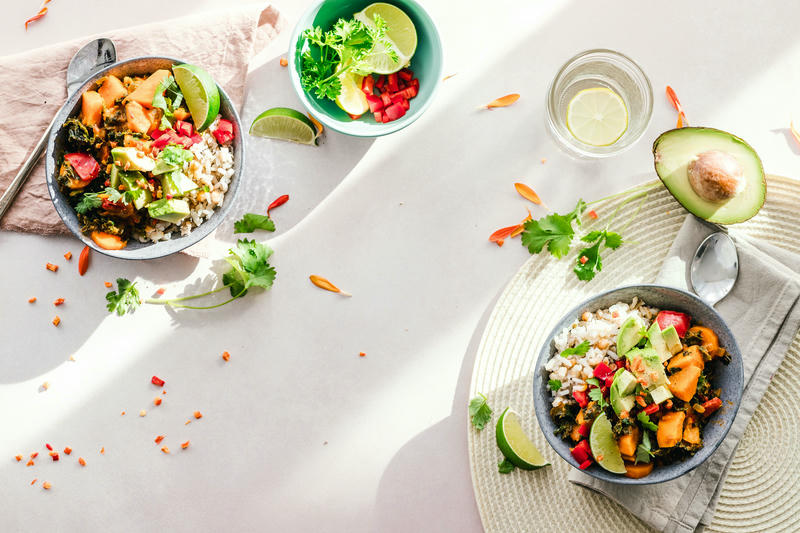Ever wondered if you are really making the healthiest choice at the supermarket? Nutrition labels are your secret guide to smarter shopping — but only if you know how to read them correctly.
Thanks to strict European Union regulations, food labels must meet high standards of transparency and safety. We’ve also included a helpful infographic from the European Commission for easy reference!

1. Why Nutrition Labels Exist
Nutrition labels protect consumers, promote transparency, and help everyone make healthier choices. They allow you to see exactly what you’re putting into your body and compare products quickly.
The foundation for today’s food labels comes from Regulation (EU) No 1169/2011, which ensures that you get accurate and clear food information no matter where you shop in the EU.
2. Snapshot: Key Changes Brought by EU Food Labelling Rules (Infographic)
Highlights:
- Mandatory allergen labeling, so ingredients like wheat, eggs, or milk must be clearly shown — making shopping safer for people with allergies.
- Clear identification of vegetable oil sources, helping you know if you’re consuming palm oil, sunflower oil, or others.
- Disclosure of nanomaterials, meaning if microscopic additives are used, you’ll be informed.
- Labels must indicate if meat or fish has been defrosted or re-formed from pieces.
- Online sellers must provide the same labeling information as physical stores.
Tip: Download or save the infographic for quick shopping reference!
3. Overview of What’s Legally Required on EU Labels
By law, every pre-packed food must show:
- Energy value (in kilojoules (kJ) and kilocalories (kcal)) to help you monitor your daily intake.
- Fat, including a special focus on saturated fat, which is the type that can raise cholesterol if eaten too much.
- Carbohydrates, showing the total amount and how much of it comes from sugars.
- Protein, important for building and repairing tissues.
- Salt, because too much can increase your blood pressure.
New rules also enforce minimum font sizes for labels, making it easier for you to read them at a glance.
4. Breaking Down the Nutrition Table: Line by Line
Each part of the nutrition table gives you essential clues:
- Energy: The amount of energy the food provides, helping you manage your overall intake.
- Fat: The total fat content. While your body needs some fat, it’s the quality that matters.
- Saturated fat: This is a type of fat found in butter, cheese, and fatty meats; eating too much can clog your arteries over time.
- Carbohydrates: This number includes all carbs, both good (like whole grains) and bad (like sugars).
- Sugars: The part of carbs that are sugars; high amounts usually mean more empty calories.
- Protein: Vital for muscle repair and overall body maintenance.
- Salt: Important to monitor because high salt foods can silently contribute to heart disease.
5. Serving Sizes and “Per 100g/100ml”—How to Read Smart
Labels often show two sets of numbers:
- Per 100g/100ml: Standardized to help you easily compare similar products.
- Per serving: Based on what the manufacturer defines as “one portion.” Watch out — these can sometimes be much smaller than what you would actually eat.
Tip: Always check if the serving size matches your typical portion!
6. Understanding % Reference Intakes (RI)
The % Reference Intake (%RI) tells you how much a single portion contributes to your recommended daily amount.
- It’s a great quick-check tool: if a food provides 50% of your daily salt in one small portion, it’s worth reconsidering!
- RI percentages make it easier to plan balanced meals without needing a calculator.
7. Front-of-Pack Labels: Nutri-Score and Traffic Lights
Some foods have extra visual labels to help you make faster choices:
- Nutri-Score: This is a colour-coded rating from A to E. “A” means the food is healthier overall (lower in sugar, salt, and saturated fat), while “E” signals it’s less healthy.
- Traffic light labeling: Uses red, amber (orange), and green colours to indicate if the food is high, medium, or low in fats, sugars, and salt. A quick glance at lots of red lights? Maybe pick another product.
These systems are voluntary but extremely helpful for quick decision-making.
8. Common Marketing Traps and Misleading Labels
Be cautious of clever wording on the front of packages:
- “Organic”: While often produced with fewer pesticides, it doesn’t automatically mean fewer calories, sugars, or fats.
- “Natural”: This sounds healthy but isn’t tightly regulated in the EU, so it doesn’t guarantee nutritional value.
- “No added sugar”: It might not have extra sugar added, but could still be naturally high in sugar (like concentrated fruit purees).
Always double-check the nutrition table and ingredient list, not just the marketing buzzwords.
9. Tips for Becoming a Label Reading Pro
Quick Checklist:
- Start by checking the serving size.
- Look at the energy (calories) per portion and per 100g.
- Scan fats, sugars, and salt — the key nutrients to watch.
- Review the ingredient list; shorter usually means less processed.
- Prefer products where whole, recognisable foods are at the top of the list.
- Use %RI to instantly spot if a product is very high in something you should limit.
With a little practice, you can evaluate most products in under 15 seconds!
Conclusion
Learning to read nutrition labels is like learning a new language — but once you speak it, you have the power to make healthier choices easily and confidently.
European nutrition label cheet sheet
| Requirement | Recommended Amount | Explanation |
|---|---|---|
| Energy Value | ~2000 kcal/day | Depends on personal needs (age, gender, activity level) |
| Total Fat | Max 70g/day | Important for energy but choose healthy fats; compare per 100g |
| Saturated Fat | Max 20g/day | Limit to reduce risk of heart disease; found in butter, fatty meats |
| Carbohydrates | No strict limit | Main energy source; choose whole grains when possible |
| Sugars | Less than 50g/day | Limit to avoid weight gain and dental problems; watch hidden sugars |
| Protein | At least 50g/day | Essential for muscle and body repair; important for active lifestyles |
| Salt | Less than 5g/day | Important to limit; high intake raises blood pressure |
Bonus: Download the Infographic


















